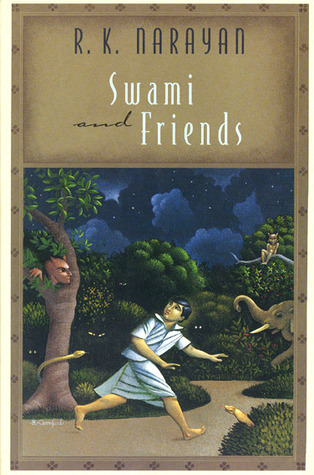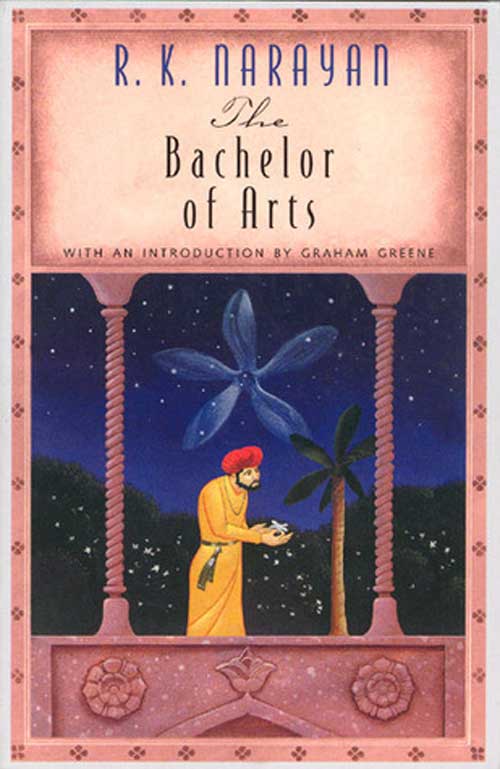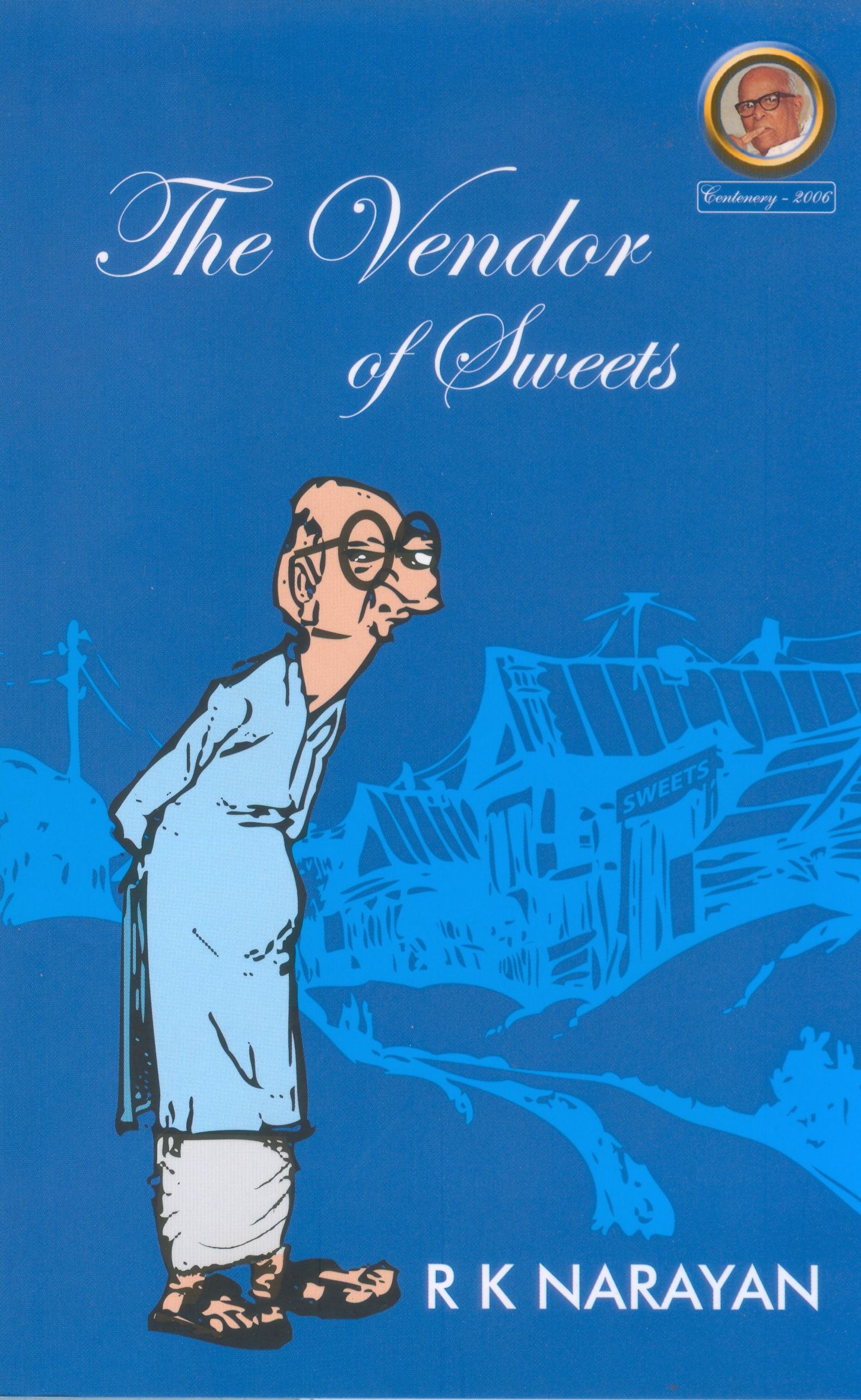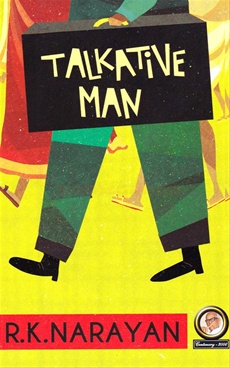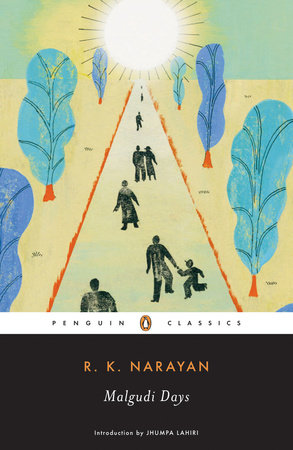Overview :
Rasipuram Krishnaswami Iyer Narayanaswami was an Indian writer known for his work set in the fictional South Indian town of Malgudi. He was a leading author of early Indian literature in English along with Mulk Raj Anand and Raja Rao. arayan highlights the social context and everyday life of his characters. He has been compared to William Faulkner who created a similar fictional town and likewise explored with humor and compassion the energy of ordinary life. Narayan's short stories have been compared with those of Guy de Maupassant because of his ability to compress a narrative. In a career that spanned over sixty years Narayan received many awards and honours including the AC Benson Medal from the Royal Society of Literature, the Padma Vibhushan and the Padma Bhushan, India's second and third highest civilian awards, and in 1994 the Sahitya Akademi Fellowship, the highest honor of India's national academy of letters. He was also nominated to the Rajya Sabha, the upper house of the Indian Parliament.

Author Portfolio :
Narayan wrote his first novel, Swami and Friends, in 1935, after short, uninspiring stints as a teacher, an editorial assistant, and a newspaperman. In it, he invented the small south Indian city of Malgudi, a literary microcosm that critics later compared to William Faulkner's Yoknapatawpha County. More than a dozen novels and many short stories that followed were set in Malgudi.
Narayan's second novel, Bachelor of Arts (1939), marked the beginning of his reputation in England, where the novelist Graham Greene was largely responsible for getting it published. Greene has called Narayan "the novelist I most admire in the English language". His fourth novel, The English Teacher, published in 1945, was partly autobiographical, concerning a teacher's struggle to cope with the death of his wife. In 1953, Michigan State University published it under the title Grateful to Life and Death, along with his novel The Financial Expert; they were Narayan's first books published in the United States.
Subsequent publications of his novels, especially Mr. Sampath, Waiting for the Mahatma, The Guide, The Man-eater of Malgudi, and The Vendor of Sweets, established Narayan's reputation in the West. Many critics consider The Guide (1958) to be Narayan's masterpiece. Told in a complex series of flashbacks, it concerns a tourist guide who seduces the wife of a client, prospers, and ends up in jail. The novel won India's highest literary honor, and it was adapted for the off-Broadway stage in 1968.
At least two of Narayan's novels, Mr. Sampath (1949) and The Guide (1958), were adapted for the movies. Narayan usually wrote for an hour or two a day, composing fast, often writing as many as 2,000 words and seldom correcting or rewriting.
Narayan's stories begin with realistic settings and everyday happenings in the lives of a cross-section of Indian society, with characters of all classes. Gradually fate or chance, oversight or blunder, transforms mundane events to preposterous happenings. Unexpected disasters befall the hero as easily as unforeseen good fortune. The characters accept their fates with an equanimity that suggests the faith that things will somehow turn out happily, whatever their own motivations or actions. Progress, in the form of Western-imported goods and attitudes, combined with bureaucratic institutions, meets in Malgudi with long-held conventions, beliefs, and ways of doing things. The modern world can never win a clear-cut victory because Malgudi accepts only what it wants, according to its own private logic.
Life Styles :
R. K. Narayan was born in a Tamil Brahmin family on 10th October, 1906 in Madras (now Chennai, Tamil Nadu), British India into a Hindu family. He was one of eight children; six sons and two daughters. Narayan was second among the sons; his younger brother Ramachandran later became an editor at Gemini Studios, and the youngest brother Laxman became a cartoonist. His father was a school headmaster, and Narayan did some of his studies at his father's school. As his father's job entailed frequent transfers, Narayan spent a part of his childhood under the care of his maternal grandmother, Parvati. During this time, his best friends and playmates were a peacock and a mischievous monkey.
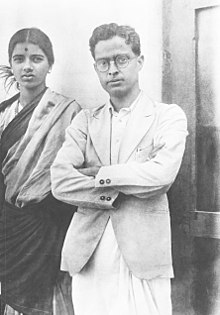
While living with his grandmother, Narayan studied at a succession of schools in Madras, including the Lutheran Mission School in Purasawalkam, C.R.C. High School, and the Christian College High School. Narayan was an avid reader, and his early literary diet included Dickens, Wodehouse, Arthur Conan Doyle and Thomas Hardy. When he was twelve years old, Narayan participated in a pro-independence march, for which he was reprimanded by his uncle; the family was apolitical and considered all governments wicked.
Narayan moved to Mysore to live with his family when his father was transferred to the Maharajah's College High School. The well-stocked library at the school and his father's own fed his reading habit, and he started writing as well. After completing high school, Narayan failed the university entrance examination and spent a year at home reading and writing; he subsequently passed the examination in 1926 and joined Maharaja College of Mysore. It took Narayan four years to obtain his bachelor's degree, a year longer than usual. After being persuaded by a friend that taking a master's degree (M.A.) would kill his interest in literature, he briefly held a job as a school teacher; however, he quit in protest when the headmaster of the school asked him to substitute for the physical training master. The experience made Narayan realise that the only career for him was in writing, and he decided to stay at home and write novels.
While vacationing at his sister's house in Coimbatore, in 1933, Narayan met and fell in love with Rajam, a 15-year-old girl who lived nearby. Despite many astrological and financial obstacles, Narayan managed to gain permission from the girl's father and married her. Following his marriage, Narayan became a reporter for a Madras-based paper called The Justice, dedicated to the rights of non-Brahmins. The publishers were thrilled to have a Brahmin Iyer in Narayan espousing their cause. The job brought him in contact with a wide variety of people and issues.
Living alone in Mysore, Narayan developed an interest in agriculture. He bought an acre of agricultural land and tried his hand at farming. He was also prone to walking to the market every afternoon, not so much for buying things, but to interact with the people. In a typical afternoon stroll, he would stop every few steps to greet and converse with shopkeepers and others, most likely gathering material for his next book.
During his final years, Narayan, ever fond of conversation, would spend almost every evening with N. Ram, the publisher of The Hindu, drinking coffee and talking about various topics until well past midnight. Despite his fondness of meeting and talking to people, he stopped giving interviews. The apathy towards interviews was the result of an interview with Time, after which Narayan had to spend a few days in the hospital, as he was dragged around the city to take photographs that were never used in the article. He died on 13 May 2001, in Chennai at the age of 94.
Popular Works :
| English Title | Genre | Year | Publishing House |
|---|---|---|---|
| Swami and Friends | Novel | 1935 | Hamish Hamilton |
| The Bachelor of Arts | Novel | 1937 | Thomas Nelson |
| My Days | Non-fiction | 1973 | Viking |
| The Mahabharata | Mythology | 1978 | Heinemann |
| Malgudi Days | Short story | 1942 | Indian Thought Publications |
| The Guide | Philosophical novel | 1958 | Viking |
| The English Teacher | Autobiographical novel | 1945 | Eyre & Spottiswoode |

